The first anniversary of 26/11 brings to mind the profound statement of Jawaharlal Nehru ‘To be secure on land we must be supreme at sea’. While Pandit Nehru’s views would have been formed in the wake of the colonization of the subcontinent, his words are a timeless truth which holds good to this day.Post independence, two major assaults on our financial capital, Mumbai, came from the sea, the first being the landing of explosives used for the “Bombay Blasts” in 1993 and the second, more recent, infiltration of terrorists by sea in November last. Both attacks were almost absurdly simple in concept, inexpensive in terms of resources and most effective in sowing murder and mayhem.
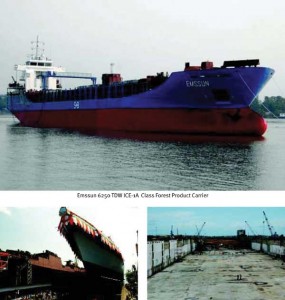 The term ‘secure’ in Nehru’s statement has a larger significance than invulnerability against armed aggression and in fact, covers the wider spectrum of economic security. Maritime supremacy cannot be achieved without the availability of optimally capable assets, in adequate numbers, comprising both, commercial vessels and warships. There is no other way of providing the needed numbers than having a strong and vibrant shipbuilding industry, because great fleets need to be built, not bought. It is not a mere accident that leading economies of the world have had long periods of shipbuilding supremacy during vital stages of their growth. European and US shipyards dominated world shipbuilding in the three decades after WW-II.
The term ‘secure’ in Nehru’s statement has a larger significance than invulnerability against armed aggression and in fact, covers the wider spectrum of economic security. Maritime supremacy cannot be achieved without the availability of optimally capable assets, in adequate numbers, comprising both, commercial vessels and warships. There is no other way of providing the needed numbers than having a strong and vibrant shipbuilding industry, because great fleets need to be built, not bought. It is not a mere accident that leading economies of the world have had long periods of shipbuilding supremacy during vital stages of their growth. European and US shipyards dominated world shipbuilding in the three decades after WW-II.
The last three decades have seen the rise of Asian economies, led by Japan, followed by South Korea and now China. These three countries have cornered 86 percent of world shipbuilding from a mere 8 percent in 1975. In contrast, India, though ranked 13th, has a share below 1.5 percent despite being a predominantly peninsular country with a coastline of about 7500 km. and having 1197 island territories.
Following the economic reforms of the 90s, India has witnessed tremendous growth in several sectors of commerce and industry, resulting in an exponential increase in the country’s internal and external trade. To enable smooth flow of goods a focused effort has been made to improve transportation infrastructure, particularly in the highways, railways and port sectors. However, such effort is not reflected in the field of shipbuilding, despite its potential to vastly transform India’s industrial landscape.
Also read:
It can be said that the world’s economy “rides on the sea” as borne out by the fact that approximately 80 percent of international trade is moved by sea. However, India’s share in income generated by world-wide sea freight, which is of the order of $ 350 bn, is a mere 0.55 percent. Indian owned tonnage accounts for 1.2 percent of world tonnage and, of this, the Indian built tonnage is only about 10 percent.
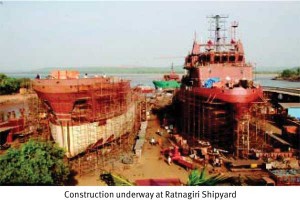 With India having enjoyed an unprecedented high growth in GDP, and the long term prospects remaining bright, there is a requirement for enormous increase in capacity of our transportation network, especially for our maritime sector, considering that 90 percent of our international trade volume is being carried by sea. The freight income generated by sea trade constitutes about 1.8 percent – 2 percent of the value of goods. Increase in India’s share of world freight would be possible only with an increase in the number of ships owned by Indian companies. However, the overall share of Indian shipping in the country’s overseas seaborne trade has been declining over the years. From 40 percent in the late 80s, it is now only 13.7 percent. In the international context, India owns around 1.2 percent of the world fleet and is ranked 20th in terms of fleet size. Smaller countries such as Singapore, Norway and Greece, with no significant cargo of their own, have a fleet size of almost four times the size of the Indian fleet and therefore carry a major share of the world’s seaborne cargo.
With India having enjoyed an unprecedented high growth in GDP, and the long term prospects remaining bright, there is a requirement for enormous increase in capacity of our transportation network, especially for our maritime sector, considering that 90 percent of our international trade volume is being carried by sea. The freight income generated by sea trade constitutes about 1.8 percent – 2 percent of the value of goods. Increase in India’s share of world freight would be possible only with an increase in the number of ships owned by Indian companies. However, the overall share of Indian shipping in the country’s overseas seaborne trade has been declining over the years. From 40 percent in the late 80s, it is now only 13.7 percent. In the international context, India owns around 1.2 percent of the world fleet and is ranked 20th in terms of fleet size. Smaller countries such as Singapore, Norway and Greece, with no significant cargo of their own, have a fleet size of almost four times the size of the Indian fleet and therefore carry a major share of the world’s seaborne cargo.
India’s foreign trade is expected to maintain a healthy growth, in the long term. For Indian shipping to even maintain its present share in India’s overseas trade, taking into account the expected scrapping of ships over 20 years of age, by one estimate 15.8 million GT would have to be added. This would require an investment of approximately $ 20 bn. Most of this would be spent in foreign shipyards due to inadequate shipbuilding capacity in the country.
The importance of the Indian Ocean for Indias long term economic growth, strategic interests and security concerns clearly indicates that the growth of Indian shipbuilding, in both, the commercial and naval sectors is a strategic imperative.
Shipbuilding acts as a catalyst for overall industrial growth due to spin offs to other industries, including steel, engineering equipment, port infrastructure, trade and shipping. The potential of shipbuilding industry in employment generation and contribution to GDP is therefore tremendous. The dynamics of India’s economic growth has created and will continue to create a demand for new ships, most of which will have to be built abroad due to inadequate indigenous capacity. On the other hand, the benefits to Indian industry and potential for employment generation from shipbuilding and the associated ancillary industry would grow manifold if India builds ships for meeting its entire tonnage requirements.
Apart from economic considerations, the strategic significance of the Indian Ocean and its littoral waters cause the region to remain an area of interest to extra regional powers. The region holds 40 percent of offshore oil reserves, 65 percent of strategic raw materials, 31 percent of gas etc. Being home to 30 percent of the world’s population, it is a potentially large consumer market and has strong economics to match. The control of choke points to the Red Sea, Persian Gulf and of the Malacca Straits, along the energy flow routes is of strategic importance to extra regional major powers, who maintain a significant naval presence in the area.
Littoral and neighbouring states in the Indian Ocean region, over the last two decades, have embarked on ambitious naval modernization programme and their navies are increasingly visible. Of particular interest and concern is the growth of the Chinese Navy and the growing naval co-operation between China and Pakistan, as well as the steady addition to the ‘string of pearls’. India has considerable and diverse maritime interests in the EEZ, including fishing and extraction of hydrocarbons, minerals and other seabed resources. These factors, together with the need to safeguard our coastline and sea routes, point to the requirement for a strong Navy. Warship design and construction are therefore vital activities which need to be aggressively improved and promoted.
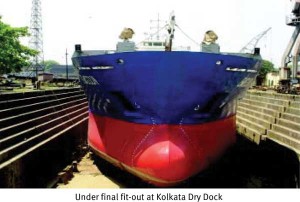 The importance of the Indian Ocean for India’s long term economic growth, strategic interests and security concerns clearly indicates that the growth of Indian shipbuilding, in both, the commercial and naval sectors is a strategic imperative. The importance of a strong maritime capability was realized by the ancient kingdoms of Southern India, whose fleets promoted Indian commerce and spread Indian culture all over Indian Ocean, notably in South East Asia. The requirement of a strong maritime capability is all the more important for modern day India, in view of the resources flowing across these waters and the continuous naval presence of extra regional powers in the Indian Ocean region. This mandates the need for putting Indian shipbuilding, in both, the naval and commercial sectors on the path of rapid growth. To achieve this, a synergetic effort would be essential in all related areas including shipbuilding technology, ship design capability, research and experimental facilities involving all stakeholders. No less important is the need for streamlining regulatory procedures and adoption of an ‘enlightened’ taxation regime for the industry.
The importance of the Indian Ocean for India’s long term economic growth, strategic interests and security concerns clearly indicates that the growth of Indian shipbuilding, in both, the commercial and naval sectors is a strategic imperative. The importance of a strong maritime capability was realized by the ancient kingdoms of Southern India, whose fleets promoted Indian commerce and spread Indian culture all over Indian Ocean, notably in South East Asia. The requirement of a strong maritime capability is all the more important for modern day India, in view of the resources flowing across these waters and the continuous naval presence of extra regional powers in the Indian Ocean region. This mandates the need for putting Indian shipbuilding, in both, the naval and commercial sectors on the path of rapid growth. To achieve this, a synergetic effort would be essential in all related areas including shipbuilding technology, ship design capability, research and experimental facilities involving all stakeholders. No less important is the need for streamlining regulatory procedures and adoption of an ‘enlightened’ taxation regime for the industry.
Indian shipbuilding is mainly concentrated in 27 shipyards. Of these, eight are in the Public Sector, six yards being under the Central Government and two under State Government with a capacity of 2.54 lakh DWT. In addition, there are 19 Private Sector yards with an established capacity of about 27000 DWT, to which are being added the large capacities of 03 green field projects. The major share of the present capacity is held by eight public sector yards, with Cochin Shipyard Limited and Hindustan Shipyard Limited having capacity and infrastructure to built vessels of 1.1 lakh DWT and 80,000 DWT respectively.
Our shipbuilding industry has been characterized by low capacity, poor productivity and obsolescent infrastructure. Despite these constraints, the industry has shown that it is capable of increasing its market share in commercial shipbuilding.
Barring two notable exceptions, the majority of private sector shipyards are limited in respect of capacity and size of the vessels they can presently build. Our capabilities in respect of technologically advanced ships, notably LNG carriers are non existent, which is a strategic shortcoming.
Our shipbuilding industry has been characterized by low capacity, poor productivity and obsolescent infrastructure. Despite these constraints, the industry has shown that it is capable of increasing its market share in commercial shipbuilding. In the IXth plan the target of 0.3 million DWT was achieved. A modest target of 0.4 million DWT was set for the Xth plan, but contrary to expectations the order book exceeded 1.3 million DWT, as a result of the world wide shipbuilding boom, which enabled Indian yards to secure orders despite their poor track record. The growth during the Xth plan period was averaging 15 percent per year as against 4.5 percent per year during the IXth plan. As a result, India’s share of the world market rose from 0.1 percent at the beginning of the Xth plan to about 1.5 percent. The Xth plan also witnessed an increase in investments in shipyard infrastructure, though investment in technology, R & D, design etc. remained low.
The increased growth has largely resulted form export orders, the bulk of which have been in the small ship segment comprising Offshore and Platform Supply Vessels and Anchor Handling Tugs, although CSL has exported some large and medium ships. This also indicates that the prospects for the export are highly favourable but is relatively negative for domestic construction of ships for Indian owners. Hence, while overseas owners are building their small and medium commercial ships in India, Indian shipping companies are purchasing their ships from abroad, both big and small, but more big than small. The fiscal and statutory rules governing domestic shipbuilding are heavily loaded in favour of export and tend to discourage construction of ships by Indian yards for Indian owners.
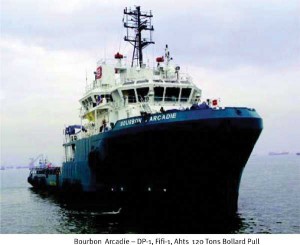 The increase in export orders obtained by the Indian shipbuilding industry, despite its shortcomings clearly indicates that in the long term, there is a large market available for tapping. Our capacity however needs to be increased, else other shipbuilding nations such as Korea, Japan and China will benefit. A proactive approach by the industry and the government is required to create a favourable climate for investment in the shipbuilding industry, which would be in our national interest. According to a study carried out by the Indian Shipbuilders Association, the industry can grow at a rate of more than 30 percent and this momentum can be maintained, to achieve a world share of 2.2 percent and an annual turnover of Rs. 18000 Cr ($ 2.5 bn), by the last year of the XIth plan. By the same projection, the industry would have the potential to attain more than 7.5 percent of the global order book and achieve a turnover of Rs. 40500 Cr ($ 9 bn) by 2017. While these projections may appear impressive when compared with past performance, they pale in comparison with China, which has already achieved our targets for 2017, and aims to corner more than 30 percent of the global share by 2015. India certainly has the potential to match Chinese prices, given our present low labour wage rates and our industrial base for manufacture of equipment.
The increase in export orders obtained by the Indian shipbuilding industry, despite its shortcomings clearly indicates that in the long term, there is a large market available for tapping. Our capacity however needs to be increased, else other shipbuilding nations such as Korea, Japan and China will benefit. A proactive approach by the industry and the government is required to create a favourable climate for investment in the shipbuilding industry, which would be in our national interest. According to a study carried out by the Indian Shipbuilders Association, the industry can grow at a rate of more than 30 percent and this momentum can be maintained, to achieve a world share of 2.2 percent and an annual turnover of Rs. 18000 Cr ($ 2.5 bn), by the last year of the XIth plan. By the same projection, the industry would have the potential to attain more than 7.5 percent of the global order book and achieve a turnover of Rs. 40500 Cr ($ 9 bn) by 2017. While these projections may appear impressive when compared with past performance, they pale in comparison with China, which has already achieved our targets for 2017, and aims to corner more than 30 percent of the global share by 2015. India certainly has the potential to match Chinese prices, given our present low labour wage rates and our industrial base for manufacture of equipment.
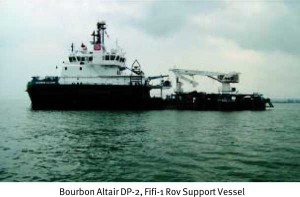 In the Naval sector, warship building is largely confined to the three Public Sector shipyards functioning under the Ministry of Defence i.e. Mazagaon Docks at Mumbai, Garden Reach at Kolkata and Goa Shipyard. There is no dearth of demand from the Indian Navy which would need 95 ships and submarines by 2022 and the Indian Coast Guard which requires 158 ships till 2017. However, with the exception of Goa Shipyard, warship building programme have been characterized by large time overruns. These overruns result from outmoded facilities, unwieldy administrative procedures and suboptimal HR policies. As a result, the Navy is sometimes compelled to place some orders abroad, so as not to jeopardise its force levels. A pressing need therefore exists to increase capacity, through modernization, creation of additional capacity including new greenfield yards, improvement in productivity and management practices.
In the Naval sector, warship building is largely confined to the three Public Sector shipyards functioning under the Ministry of Defence i.e. Mazagaon Docks at Mumbai, Garden Reach at Kolkata and Goa Shipyard. There is no dearth of demand from the Indian Navy which would need 95 ships and submarines by 2022 and the Indian Coast Guard which requires 158 ships till 2017. However, with the exception of Goa Shipyard, warship building programme have been characterized by large time overruns. These overruns result from outmoded facilities, unwieldy administrative procedures and suboptimal HR policies. As a result, the Navy is sometimes compelled to place some orders abroad, so as not to jeopardise its force levels. A pressing need therefore exists to increase capacity, through modernization, creation of additional capacity including new greenfield yards, improvement in productivity and management practices.
In both the naval and commercial sectors, mere increase in infrastructure will not ensure achievement of desired results. For integrated growth of the industry, there is also a need to create an R & D base, develop in house design capability, infuse new technology, develop skilled workforce, adopt appropriate fiscal measures and remove administrative hurdles, so that Indian shipbuilding can achieve credibility as a source for delivering quality ships in time. Whereas the Indian Navy has established and nurtured an in-house design organisation, and taken the initiative to develop indigenous sources of equipment, for strategic reasons, the same measures need to be taken in the commercial sector, in order to bring about synergetic economies of scale.
 Advances in ship design and in construction technology are derived from extensive, long-term research in wide ranging fields, which involves substantial financial support, far more than is available in India. It would however, not be in our interest to re-invent the wheel; therefore strategies to incorporate the results of such research in indigenous shipbuilding need to be evolved. The JV route, with a larger share of FDI offers an avenue to meet this objective. If we are able to produce ships which offer greater operational efficiencies i.e. lower running costs and longer service life, as well as lower acquisition costs than their peers, we would be able to attract international customers.
Advances in ship design and in construction technology are derived from extensive, long-term research in wide ranging fields, which involves substantial financial support, far more than is available in India. It would however, not be in our interest to re-invent the wheel; therefore strategies to incorporate the results of such research in indigenous shipbuilding need to be evolved. The JV route, with a larger share of FDI offers an avenue to meet this objective. If we are able to produce ships which offer greater operational efficiencies i.e. lower running costs and longer service life, as well as lower acquisition costs than their peers, we would be able to attract international customers.
A distinctive feature in the commercial sector is the provision of subsidy to Indian shipyards by the Government. The continuation of this measure at least over the XIth plan is essential because of the high incidence of taxation and the high cost of capital. Without this subsidy, Indian commercial shipyards would find if difficult to remain financially viable and would not attract the investments necessary for high growth and achieving economies of scale. Once economies of scale are realized, the issue of subsidies can be reviewed.
Our shipbuilding industry requires the focused attention of the government to create conditions required for its growth. Our geo-strategic and geo-political concerns underline the need for a strong and capable Navy and Coast Guard, fully capable of safeguarding our security and economic interests. Our commercial shipbuilding sector has demonstrated its ability to compete successfully in the international market in several niche segments. This competitiveness, if extended across the board, including in high technology sectors would yield substantial returns. There is, therefore, a need to remove structural weaknesses and to create a fiscal, commercial and statutory environment, conducive to the sustained growth and self sufficiency of our shipbuilding industry. An integrated approach is necessary as half-measures would not result in any headway.
Firstly, both existing and future shipyards need to be considered as Special Economic Zones i.e. given a full SEZ status. This is necessary because ships imported by Indian owners are given full exemption of customs duty and presently custom duty of about 35 percent is levied on all capital equipment required for shipbuilding, even though this measure does not protect any industry in India. A need therefore exists to accord export status for ships built in India for Indian owners. SEZ status should also be accorded to any other ancillary industry that may come up to enable the industry to grow in clusters. This measure would attract much needed investment, and would also nurture the growth of the in land water and coastal sectors.
 Secondly a ‘single window clearance’ system needs to be brought into place for according clearance to new shipyard projects covering land acquisition, environmental clearance, power and water etc., so that project implementation is not delayed. An empowered professional authority could be set up to accord such clearances. The present requirement to obtain multiple clearances from various departments acts as a deterrent to investment.
Secondly a ‘single window clearance’ system needs to be brought into place for according clearance to new shipyard projects covering land acquisition, environmental clearance, power and water etc., so that project implementation is not delayed. An empowered professional authority could be set up to accord such clearances. The present requirement to obtain multiple clearances from various departments acts as a deterrent to investment.
Investment in R&D and in shipbuilding technology should be appropriately incentivized by according fiscal benefits analogous to those given to the pharmaceutical industry.
Rationalisation of taxes and duties and elimination of the inappropriate service tax, which only help foreign shipbuilders, should be effected. Taxation models followed by leading shipbuilding nations for their industry should be adopted.
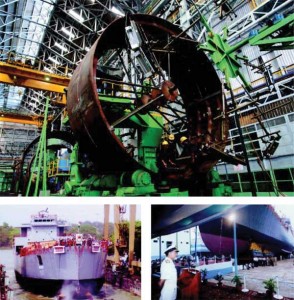 Custom bonded warehouse rules need to be amended, including the period for which materials can be stored, commensurate with the requirements of the industry.
Custom bonded warehouse rules need to be amended, including the period for which materials can be stored, commensurate with the requirements of the industry.
An expanding shipbuilding industry would require a large trained work force, covering all areas in the techno-economic spectrum of shipbuilding. Universities for shipbuilding technology should be created, in collaboration with universities of leading maritime nations in order to provide well trained and capable human resource, covering the entire spectrum from basic shipbuilding trade skills to high-end research.
The constraints on our shipbuilding industry as well as the opportunities available have caught the attention of government agencies and some initiatives are visible to improve the situation. However, in order to achieve concrete results within a short timeframe consideration needs to be given to forming a high-level, empowered Group of Ministers to implement corrective measures. This GoM would need to be supported by a permanent Task Force, composed of representatives from all stakeholders to draw up specific plans, draft suitable rules and regulations, obtain approvals and oversea implementation. Unless such measures are enforced with the urgency that they merit, the vision of seeing India emerge as a major shipbuilding nation would remain a mirage. If, on the other hand, the proposed measures are implemented with full vigour, the transformation of Indian shipbuilding into the top league would be assured, resulting in widespread benefit to the nation.




